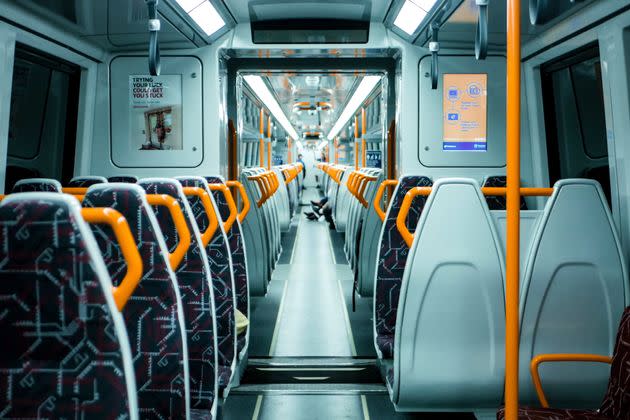These Risk Factors Affect Whether You'll Catch Covid-19 On A Train
We’re here to guide you through the coronavirus pandemic. Sign up to the Life newsletter for daily tips, advice, how-tos and escapism.
If you’ve returned to work and you commute on a train, you’ll probably want to know more about the risks of catching Covid-19 if someone in your carriage is infected.
A new study from the University of Southampton shines a light on this. Based on high-speed train routes in China, researchers found that for train passengers sitting within three rows (widthwise) and five columns (lengthwise) of an infected person, between zero and 10% of passengers caught the disease.
There were two key factors that increased the likelihood of catching Covid-19: how long a person was travelling on the train and how close they were sat to the infected person. Lead investigator Dr Shengjie Lai said these “can make a big difference” as to whether Covid-19 is passed on.
Related...
The WorldPop team at the University of Southampton conducted their study by analysing data of train travel in China between 19 December 2019 and 6 March 2020. This included 2,334 infected people and 72,093 close contacts. Their travel times ranged from between less than an hour to eight hours.
Passengers travelling in seats either side of an infected person suffered the highest level of transmission. For those sitting on the same row, there was also an increased risk of catching Covid-19.
The risk of transmission increased slightly for every hour a person travelled on the same carriage as an infected person.
Interestingly, the researchers found very few people who used a seat previously occupied by an infected person went on to become ill with the virus.

The researchers concluded that a safe social distance of more than one metre is required for one hour spent travelling together. After two hours of contact, they consider a...

 Yahoo Lifestyle
Yahoo Lifestyle 

